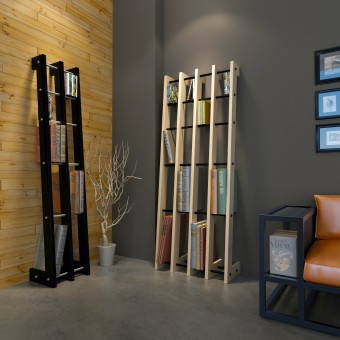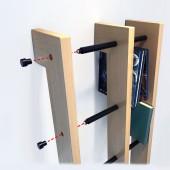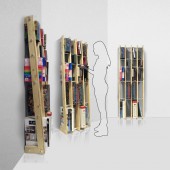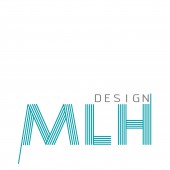Add+it Bookshelf by Mehmet Lutfi Hidayetoglu |
Home > Winners > #44864 |
 |
|
||||
| DESIGN DETAILS | |||||
| DESIGN NAME: Add+it PRIMARY FUNCTION: Bookshelf INSPIRATION: The design uses an innovative furniture assembly technique by using together strong neodymium magnets, which completely deactivates the traditional furniture fitting techniques, materials and assembly proficiency. It shortens the production processes and provides for the assembly to be made by the end user without feeling the need for any tools and materials. On the other hand, thanks to the modular pieces, the users can customize the furniture by making the combinations that they want. UNIQUE PROPERTIES / PROJECT DESCRIPTION: Addit is a different furniture that makes the user a part of the design process, that can be customized, that is innovative with its method of connection and that can be easily attained economically. Due to its special form, it provides for the practical and creative storing of books and magazines in the smallest area. The aluminum pipes hold together the wooden modules and are attached to each other with strong neodymium magnets. Thanks to these, no tools and fitting materials are needed. OPERATION / FLOW / INTERACTION: Thanks to the magnetic assemblers, it is especially possible to be able to customize the design and to disassemble and assemble repeatedly the furniture in different forms without deformation. There is no need for any tools, materials and assembly proficiency during assembly. The user can update the design when desired by changing the places and numbers of the modules. The body elements are connected to each other by the pipes with magnets. PROJECT DURATION AND LOCATION: The design registration in Turkey for this project was obtained in 2011. The prototypes were made in June 2011, whereas, the actual production was made in Konya, Turkey, in April 2015. FITS BEST INTO CATEGORY: Furniture Design |
PRODUCTION / REALIZATION TECHNOLOGY: The most important detail of the design is the neodymium magnet aluminum pipes, which hold together the body parts. Thanks to the gradated cavities opened on the body, the wooden pieces carry the entire load. Due to these, there is no load on the magnets and they only assume the function of holding the system together. The material preference of the design was made according to the principle of recyclability. Consequently, recycled wooden boards were used in the body, whereas, aluminum was used in the connecting elements. SPECIFICATIONS / TECHNICAL PROPERTIES: The design will be presented unassembled within a flat box and with box alternatives that would constitute a different number of modules, such as in threes or fives. The box dimensions of the module with fives is 6 x 25 x 140 cm. Whereas, the weight of the packed product is 4 kg. Thanks to the placement, the producer and seller are not forced to reflect the transport, storage or assembly costs to the user. TAGS: Bookshelf, Bookcase, Furniture, Modular, Interior, Magnet RESEARCH ABSTRACT: The aim of the project is to be able to assemble and disassemble furniture repeatedly, to be able to make the implementation by the user and in a manner without tools and to provide for flexibility and customizability in the design. The furniture design trends are advancing towards approaches where furniture can be customized according to the needs of the user and where the final form of the design is determined by the user. Nevertheless, the manufacturer is in a tendency for reducing the transport, assembly and service costs. This situation forces furniture to be transported in small boxes without attaching parts, to be assembled without the need of an expert and to have dynamic design attributes. The joining materials, such as minify fittings, sockets, hinges, corner fittings, etc. used in furniture require proficiency in production and assembly. However, dissambling furniture more than once is the cause of damaging and making these joinings unusable. The magnetic assemblers developed decrease the production, assembly and service costs and extends the life of the furniture. It is planned that the magnetic assemblers will take the place of all of the connecting accessories, such as the existing minifix fittings, socket screws, corner joinings, module screws and hinges. The magnet attributes and the joining geometry that will be used in the joining, which will be used in the design of the Addit, are determined according to the loads that will come on the furniture. Thanks to the magnetic assemblers, it is especially possible to be able to customize the design and to disassemble and assemble furniture in different forms repeatedly without deformation. In summary, this design presents convenience and flexibility at all of the phases, by starting from the manufacturing process up until the moment of use. CHALLENGE: The definition of the basic problem of the design is flexibility and customizability in the design. However, flexible designs make it necessary to be constituted from unassembled pieces. Some important problems emerge with multi-pieces and being able to disassemble and assemble. In the lead of these problems are the deformation of the pieces in a short period of time during assembly and disassembly and the necessity that the assembly processes are made by an expert. This design tries to use the magnetic field in order to eliminate this problem. On this point, the greatest problem that the Addit attempted to solve was the determination of the withdrawing force and the loads that would come on the magnets. It was attempted to work on the joining details and the cross-section forms of the pieces for being able to control this difficulty. Thanks to the graduated joinings implemented, the load that would be formed by the books, was removed from the magnets and transferred to the body. ADDED DATE: 2016-02-06 23:19:08 TEAM MEMBERS (1) : - IMAGE CREDITS: Image #1: Illustrator Fikret Bulut, Add+it, 2016. Image #2: Illustrator Mehmet Lutfi Hidayetoglu, Addit, 2016. Image #3: Illustrator Mehmet Lutfi Hidayetoglu, Addit, 2015. Image #4: Illustrator Mehmet Lutfi Hidayetoglu, Addit, 2016. Image #5: Photographer Mehmet Lutfi Hidayetoglu, Addit, 2016. PATENTS/COPYRIGHTS: TPE 2011 06089 / Copyrights, Mehmet Lutfi Hidayetoglu, 2011 |
||||
| Visit the following page to learn more: http://goo.gl/uEUuXs | |||||
| AWARD DETAILS | |
 |
Add+it Bookshelf by Mehmet Lutfi Hidayetoglu is Winner in Furniture Design Category, 2015 - 2016.· Read the interview with designer Mehmet Lutfi Hidayetoglu for design Add+it here.· Press Members: Login or Register to request an exclusive interview with Mehmet Lutfi Hidayetoglu. · Click here to register inorder to view the profile and other works by Mehmet Lutfi Hidayetoglu. |
| SOCIAL |
| + Add to Likes / Favorites | Send to My Email | Comment | Testimonials | View Press-Release | Press Kit |
Did you like Mehmet Lutfi Hidayetoglu's Furniture Design?
You will most likely enjoy other award winning furniture design as well.
Click here to view more Award Winning Furniture Design.








